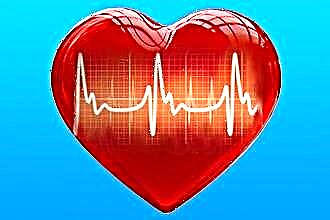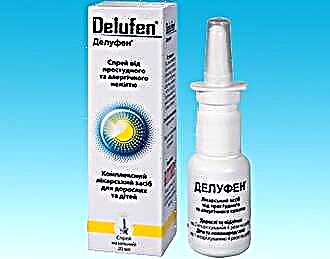Instructions for using the medicine
We will try to understand the basic principles of using Panangin.
Indications: what does the drug help from?
 Instructions for the use of Panangin indicate the following cases in which it is advisable to prescribe this medication:
Instructions for the use of Panangin indicate the following cases in which it is advisable to prescribe this medication:
- as an adjunct therapy for chronic heart disease:
- insufficiency of the pumping function of the myocardium;
- postinfarction weakening of the activity of cardiomyocytes;
- arrhythmias (especially ventricular);
- ischemic heart disease (angina pectoris).
- during therapy with cardiac glycoside preparations for:
- increasing their efficiency;
- protecting the heart muscle from toxic damage by these drugs;
- if there is an alimentary deficiency of Potassium or Magnesium (in case of eating disorders or diseases of the gastrointestinal tract), which can manifest itself, including cramps of the calf muscles.
Panangin is not prescribed alone (as monotherapy) - it is used as one of the components of complex treatment.
Mechanism of action
Potassium and Magnesium are important ions that work most efficiently when inside the cell. In the preparation, they are presented in the form of aspartate salts. According to some experts, he is responsible for transporting them to the place of greatest activity (this function is called "ion conductor").
Panangin's mechanism of action:
 Potassium performance of its physiological functions. First of all, this is the support of the membrane potential of cardiomyocytes and cells of the cardiac conduction system (which leads to the normalization of their electrical excitability). The consequence of this is:
Potassium performance of its physiological functions. First of all, this is the support of the membrane potential of cardiomyocytes and cells of the cardiac conduction system (which leads to the normalization of their electrical excitability). The consequence of this is:- adequate contraction of myocardial fibers;
- normalization of the heart rate;
- reducing the risk of arrhythmia;
- reduction of the toxic effect of cardiac glycosides on the myocardium.
- Magnesium action:
- activity as a cofactor (a component of an enzyme - a protein that accelerates the course of biochemical reactions in the body, including those aimed at restoring the structure of the heart muscle);
- improvement of myocardial contractility;
- a decrease in the need for cardiomyocytes in the supplied oxygen (which means that they become more resistant to ischemia and the risk of their necrotic lesion - heart attack);
- reduces the ability to contract in the smooth muscle cells of the coronary arteries (and this leads to their expansion and improvement of coronary blood flow, which is the prevention of ischemic heart damage).
Since two ions are present in one drug at once (this is the active form of chemical elements), they complement each other's action. In addition, an apparent deficiency of one of them is very often accompanied by a latent shortage of the other, and a comprehensive appointment prevents the onset of symptoms of shortage.
Potassium and magnesium, acting together, more effectively reduce the toxic effect of cardiac glycosides on cardiomyocytes.
Contraindications and side effects
Contraindications to admission, mainly, consist in the presence of one of the conditions in which the concentration of Potassium (to a greater extent) or Magnesium (less significant) in the body increases significantly. This:
- acute or chronic renal failure;
 increased content of one of the ions in the blood plasma;
increased content of one of the ions in the blood plasma;- Addison's disease (adrenal gland pathology);
- atrioventricular block (violation of the passage of an impulse in the conducting pathways of the heart);
- hemolysis (destruction) of erythrocytes in the vascular bed;
- violation of amino acid metabolism;
- cardiogenic shock (a sharp drop in pressure due to dysfunction of the heart muscle);
- metabolic acidosis (too high acidity of the internal environment of the body);
- hypohydration (dehydration) of the tissues of the human body;
- severe myasthenia gravis (muscle weakness).
Also, the drug should not be used in case of hypersensitivity or allergy to one of its components. Use during pregnancy and breastfeeding has not been investigated, and therefore it is recommended to take the drug only under the supervision of a doctor.
Neglecting contraindications will lead to a significant increase in the risk of side effects (in some cases, cardiac arrest is possible).
Possible symptoms of Panangin side effects when taken in pill form
| Suffering system | Clinical manifestations |
|---|---|
| Cardiovascular | Atrioventricular block (the impulse passes worse from the atrium to the ventricle, or this segment of the conducting system completely ceases to function), the appearance of extrasystoles (extraordinary contractions of the heart) |
| Digestive | Feeling of nausea and vomiting, diarrhea. In some patients, discomfort or burning sensation under the ribs |
| Electrolyte-ion balance | Hyperkalemia: vomiting and nausea, stool disturbances (diarrhea), paresthesia (sensations in the body that are difficult to describe and are not the result of mechanical action) |
| Hypermagnesemia: hyperemia (flushing, giving a red tint) of the face, thirst, hypotension, decreased reflex activity, depression of the respiratory center, convulsions |
When a solution of the drug is injected into a vein, the following may occur:
- hyperkalemia (muscle weakness, nausea and vomiting, confusion, vomiting, fatigue, dizziness, slow heart rate even before cardiac arrest, blockade of impulse conduction);
- hypermagnesemia (hypotension, lethargy (pathological drowsiness), facial flushing);
- phlebitis (due to violation of sanitary standards for infusion).
The number of side effects with intravenous administration increases if the drug is infused faster than indicated in the instructions.
Method and rules of use
The tablets must be taken after meals three times a day with a small amount of clean water. Depending on the expected result, take two (for treatment) or one (for prophylaxis) at a time. This type of use minimizes the negative effect of gastric hydrochloric acid on the activity of the drug.
 The solution for infusion in ampoules is used as follows: take it in an amount of 10-20 ml, add 5% glucose to 50-100 ml, and inject it by means of an intravenous drip system. It is important to do this slowly (at a rate of 20 drops per minute), as this reduces the risk of side effects. It is possible to repeat the infusion (infusion) of such a volume after 4-6 hours. Intravenous injections are performed only under sterile conditions in a hospital procedural room (at home, there is a high risk of infecting and provoking inflammation of the walls of veins and nearby tissues).
The solution for infusion in ampoules is used as follows: take it in an amount of 10-20 ml, add 5% glucose to 50-100 ml, and inject it by means of an intravenous drip system. It is important to do this slowly (at a rate of 20 drops per minute), as this reduces the risk of side effects. It is possible to repeat the infusion (infusion) of such a volume after 4-6 hours. Intravenous injections are performed only under sterile conditions in a hospital procedural room (at home, there is a high risk of infecting and provoking inflammation of the walls of veins and nearby tissues).
The compatibility of Panangin and alcohol is questionable for a number of reasons:
- this tandem can cause vasoconstriction;
- alcoholic beverages contribute to the speedy elimination of Potassium and Magnesium, which were so hard delivered by Panangin;
- and this drug is not prescribed to healthy people, and in case of heart disease and their drug treatment, alcohol is not recommended in principle.
Composition, release forms and doses
Panangin contains two salts, but these are kitchen and sea salts that are not familiar to us. Such a chemical compound is simply a form of stabilization of one of the active metals: Potassium and Magnesium.
The composition of the preparation Panangin
| Chemical substance | Dosage (g) | Equivalent amount of active metal (mg) | |
|---|---|---|---|
| Acting | Tablets | ||
| Potassium aspartate | 0,158 | 36,2 | |
| Magnesium aspartate | 0,14 | 11,8 | |
| Subsidiary | |||
| Silicon dioxide | 0,002 | ||
| Povidone | 0,0033 | ||
| Magnesium stearate | 0,004 | ||
| Talc | 0,01 | ||
| Corn starch | 0,0861 | ||
| Potato starch | 0,0033 | ||
| Solution for injection (10 ml) | |||
| Potassium aspartate | 0,452 | 103,3 | |
| Magnesium aspartate | 0,4 | 33,7 | |
| Water for injections | Up to 10 ml | ||
Forms of release and dosage
| Dosage form | Standard Application | Maximum daily dose | Peculiarities |
|---|---|---|---|
| Tablets | One, three times a day | 9 tablets in three doses | It is used after meals, since the increased acidity of gastric juice on an empty stomach reduces its bioavailability (effectiveness) |
| Injection | At a rate of 20 drops per minute | 4-6 times a day, 1-2 ampoules | To prepare a solution for intravenous drip administration, use the contents of 1-2 ampoules of the drug and 50-100 ml of 5% glucose |
Overdose symptoms
Documented cases of Panangin overdose have not yet been identified. However, it is theoretically possible. An excess of the drug will manifest itself as symptoms of hyperkalemia:
 decrease in working capacity;
decrease in working capacity;- muscle weakness;
- parasthesias;
- clouding of consciousness;
- arrhythmias:
- bradycardia;
- deterioration of atrioventricular impulse conduction;
- cardiac arrest during diastole (relaxation).
Symptoms of hypermagnesemia will also develop:
- a decrease in the conduction of an electrical impulse to muscle fibers;
- nausea and vomiting;
- drowsiness (to lethargic state);
- arterial hypotension;
- oppression (significant weakening of the response) of tendon reflexes (for example, tapping with a hammer slightly below the knee, on the tendon of the quadriceps femoris muscle, which provokes raising the foot and lower leg up);
- respiratory arrest (dysfunction of neuromuscular regulation of the ventilation process);
- coma (lack of consciousness and suppression of vital functions).
In case of symptoms of drug overdose, the administration of Panangin should be stopped immediately. Calcium chloride acts as an antidote (neutralizer of the toxic effect of Potassium and Magnesium ions). First you need to enter 10 ml of a 10% solution of this substance. This drug helps to limit the activity of potassium and restore the correct ratio of chemical compounds in the internal media of the body.
Analogues and cheap substitutes
One of the cheapest substitutes is Asparkam. It contains the same Potassium and Magnesium, but at a dosage of 0.175 mg of each element per tablet. There are dosage forms for intravenous administration. Depending on the manufacturer, a distinction is made between:
- Asparkam-L;
- Asparkam-AKOS4;
- Asparkam-Ros;
- Asparkam-UBF;
- Asparkam-Ferein.
 Other analogues of Panangin:
Other analogues of Panangin:
- Aspangin (in the form of tablets and solution for infusion);
- Asmarkad;
- Ritmocor (capsules (0.3 g each of Magnesium gluconate and 0.06 g of Potassium gluconate) and ampoules for intravenous administration);
International Medicines:
- Panangin forte (Magnesium 0.28 g, Potassium 0.316 g, a foreign manufacturing company produces only in the form of tablets);
- Potassium and Magnesium aspartate Berlin-Chemie (per liter - 3.854 g of potassium hydroxide, 1.116 g of magnesium oxide).
How long can you take the medicine without interruption?
The scheme of using Panangin depends on the characteristics of the condition of each individual patient. Of course, the most effective will be the dose and frequency of admission, selected by the treating doctor. Here we will consider the averaged option.
The duration of taking the drug is from one to 3 months. The average course is 4 weeks, but it can be repeated. If necessary, ionic support for the work of the heart muscle, drug therapy is continued on an ongoing basis.
If necessary, Panangin is prescribed together with Riboxin (a precursor of adenosine triphosphoric acid - ATP, a compound that stores energy in the form of a special type of biochemical bond). Working in tandem, they improve myocardial structure and optimize cardiac function, helping to avoid tachycardia and pathological hypertrophy of left ventricular cardiomyocytes in athletes. When taking cardiac glycosides, these drugs reduce the risk of toxic effects (such as arrhythmias).
When does Panangin start to work?
For the full manifestation of the clinical effects of the drug, it is necessary to undergo a whole course of administration. However, the first results may appear already at the end of the first week of using this medication.
The rate of development of the therapeutic effect on the body depends on the degree of deficiency of Potassium and Magnesium, as well as on individual characteristics. A certain role is played by the fulfillment of the rules for taking the drug.
Conclusions
According to the annotation, Panangin is a way of delivering Potassium and Magnesium directly to the heart muscle. This ionic support has a very beneficial effect on the functioning of cardiomyocytes. You can use this medication for treatment and prophylactic purposes.
Such a phenomenon as an overdose has not yet been encountered when using this drug (which indicates the safety of the patient during drug therapy). Panangin can be used in the form of tablets and a solution for injection (administered intravenously after dilution with glucose).

 Potassium performance of its physiological functions. First of all, this is the support of the membrane potential of cardiomyocytes and cells of the cardiac conduction system (which leads to the normalization of their electrical excitability). The consequence of this is:
Potassium performance of its physiological functions. First of all, this is the support of the membrane potential of cardiomyocytes and cells of the cardiac conduction system (which leads to the normalization of their electrical excitability). The consequence of this is: increased content of one of the ions in the blood plasma;
increased content of one of the ions in the blood plasma; decrease in working capacity;
decrease in working capacity;

